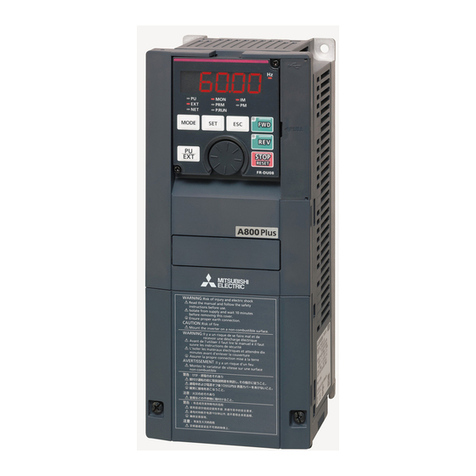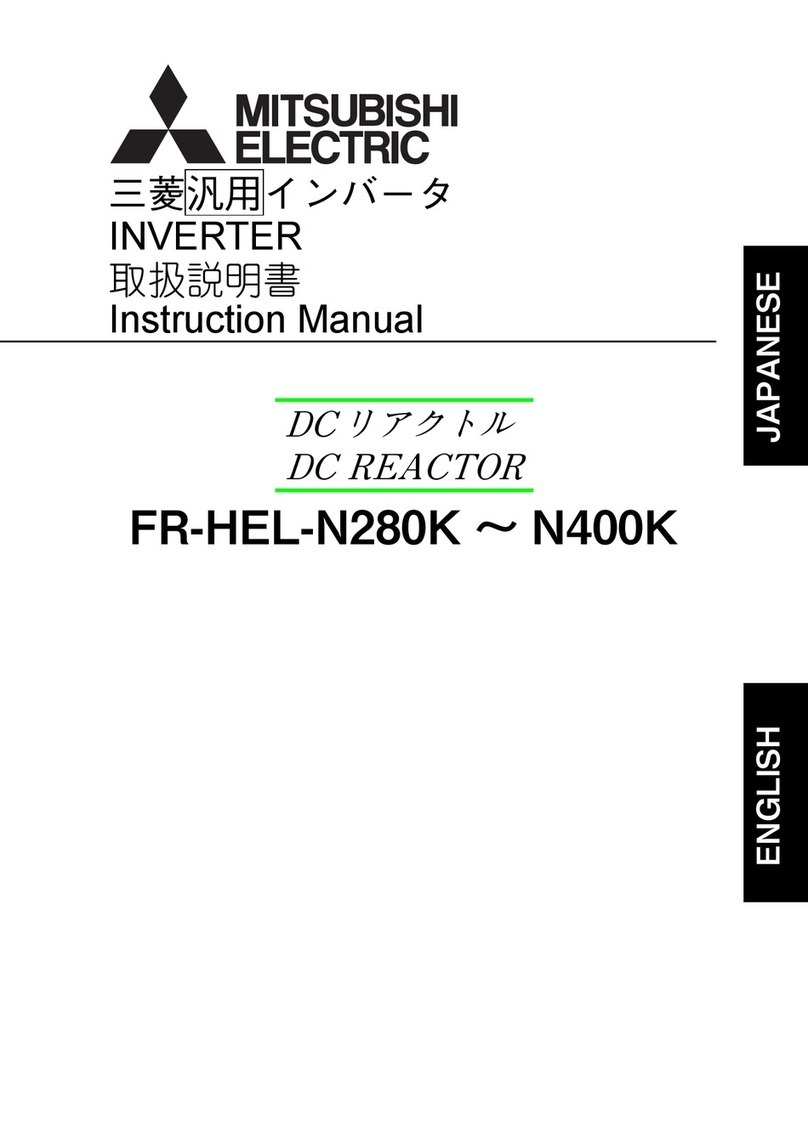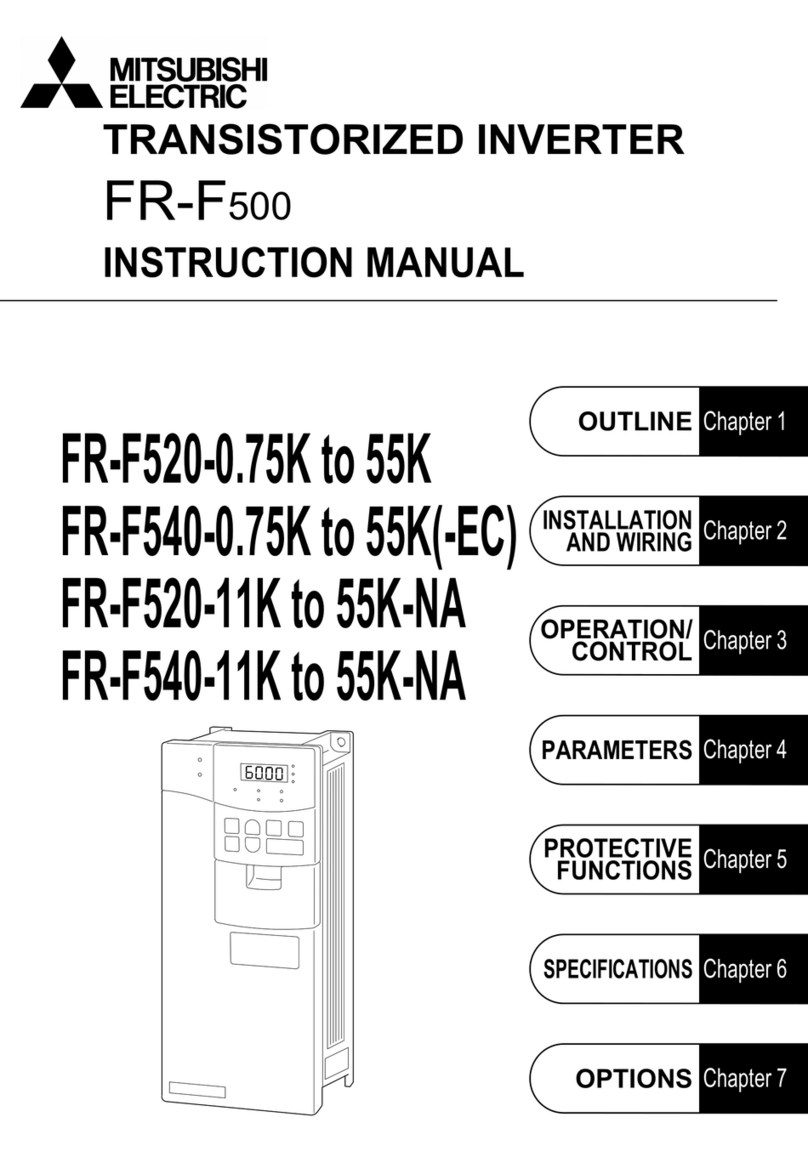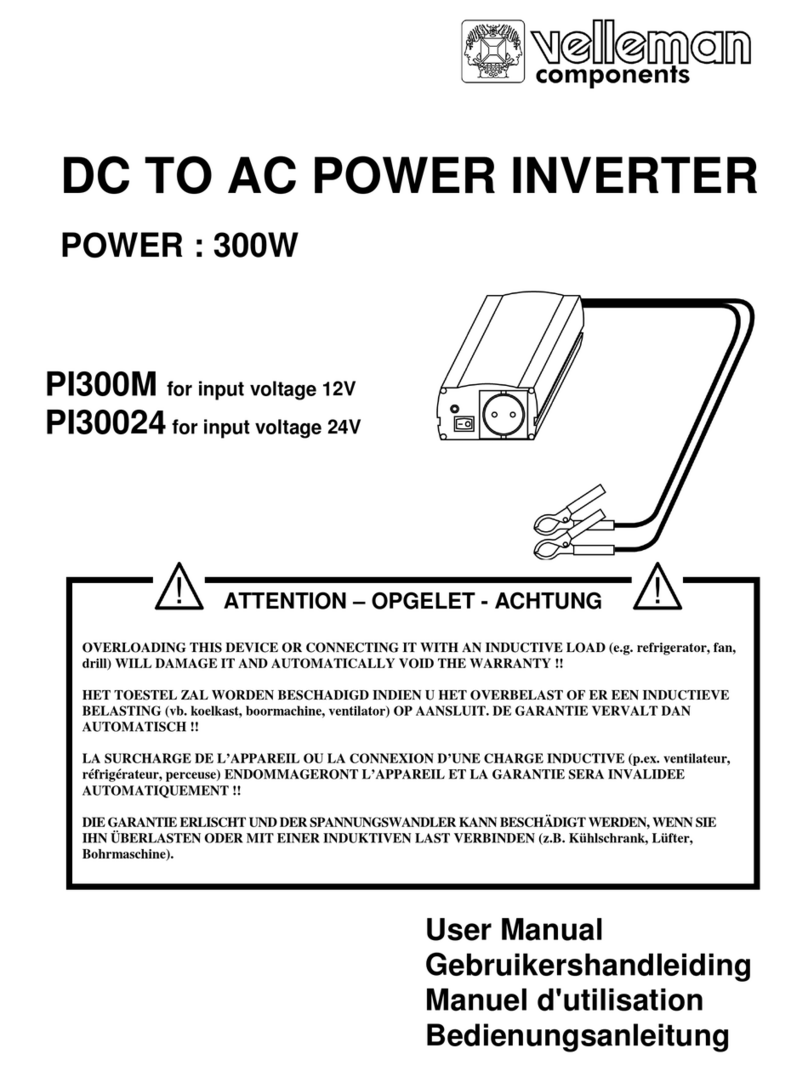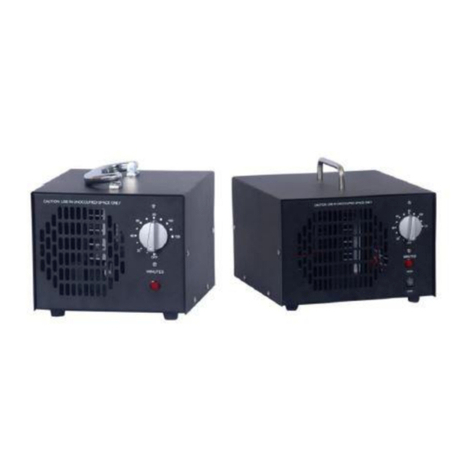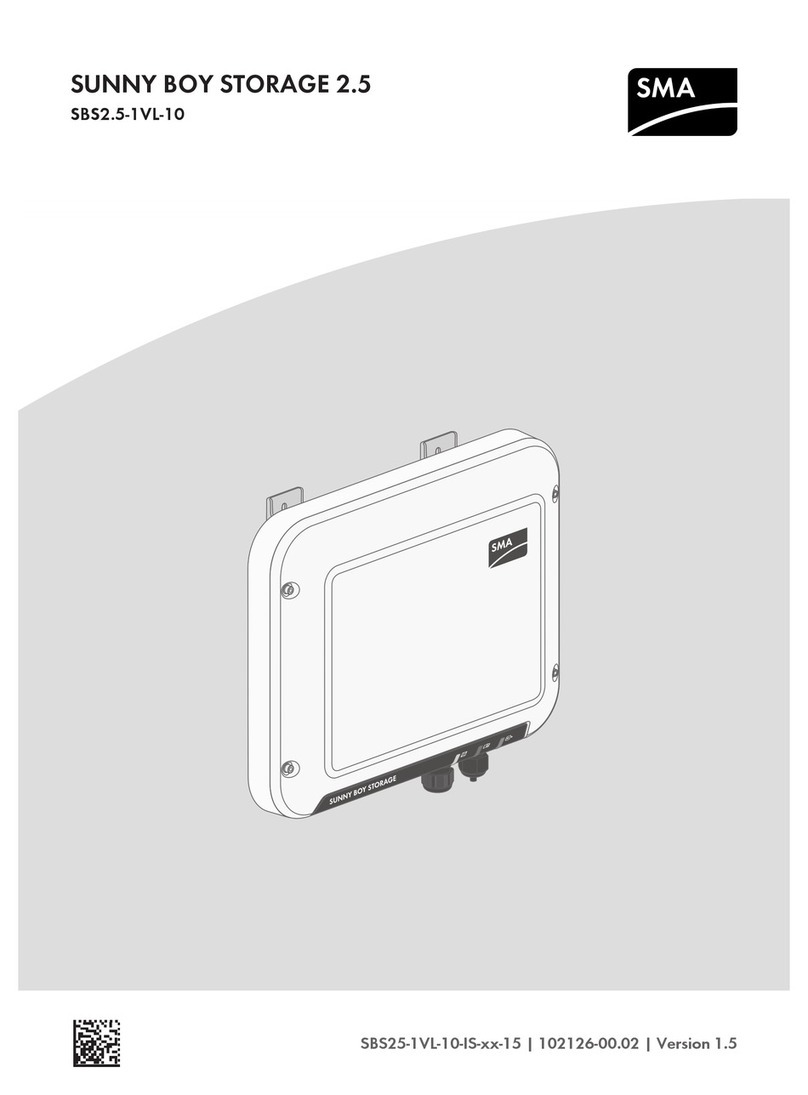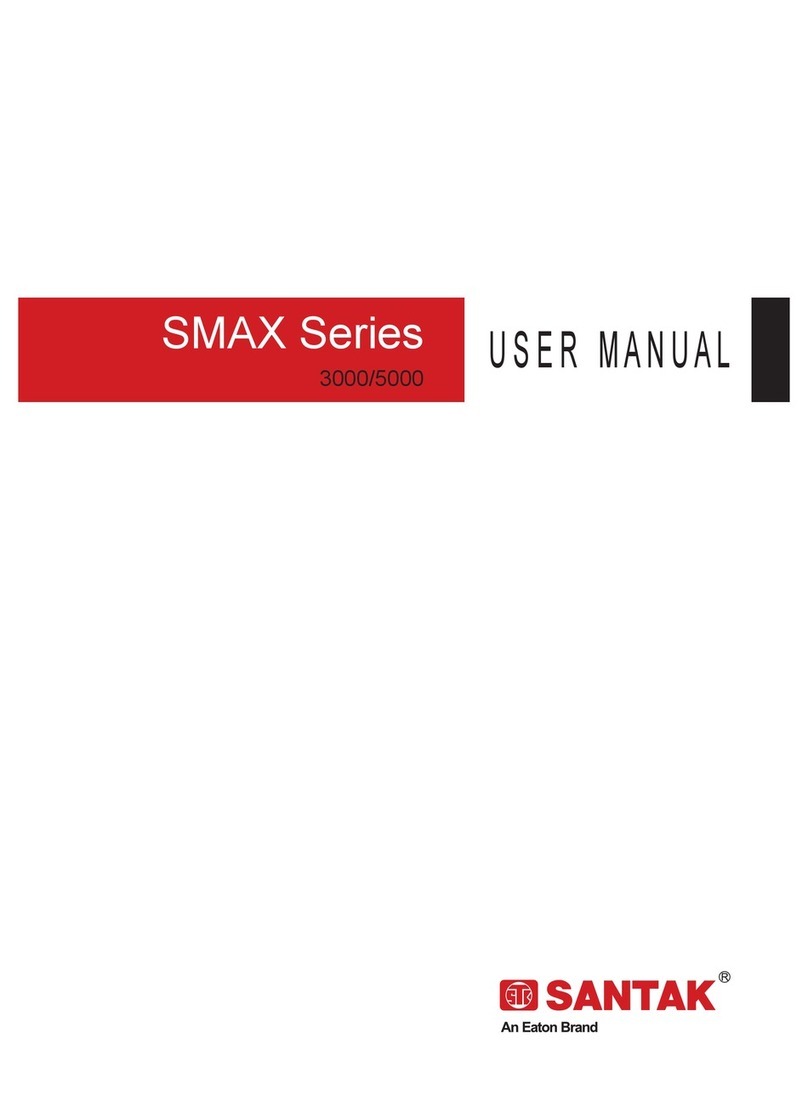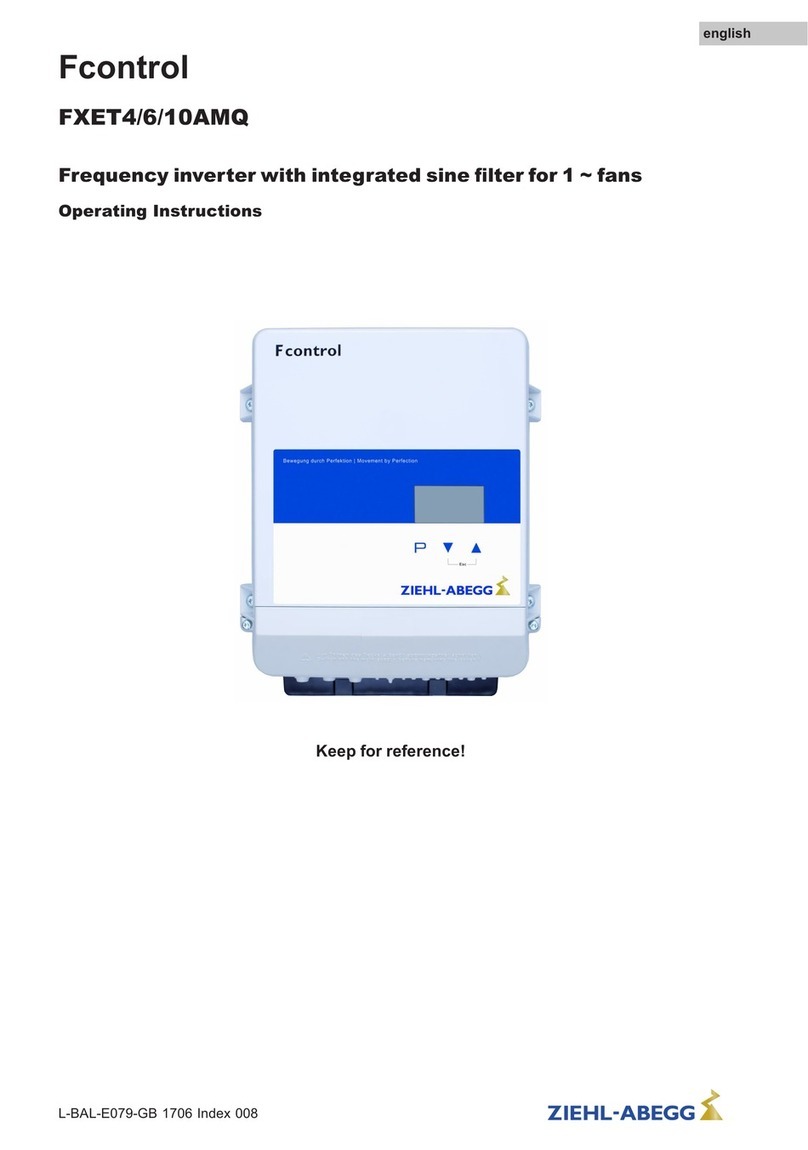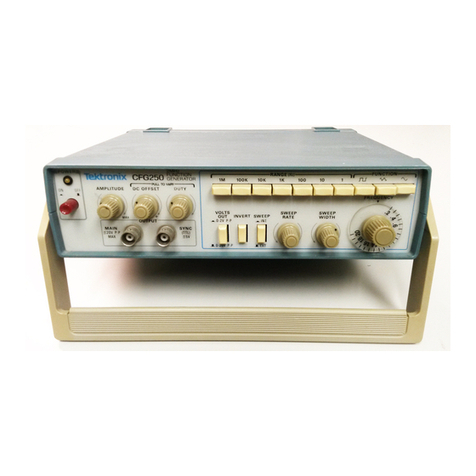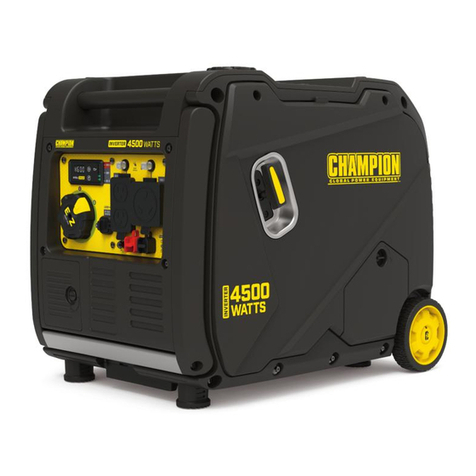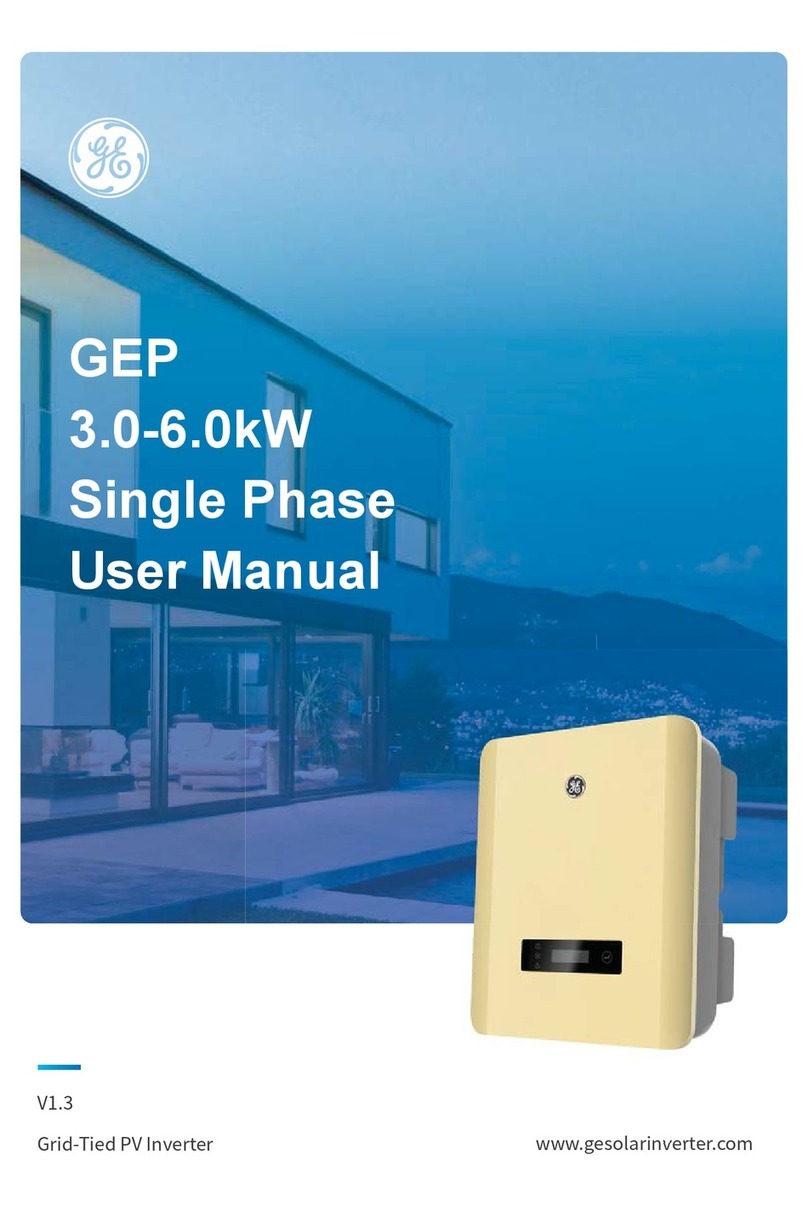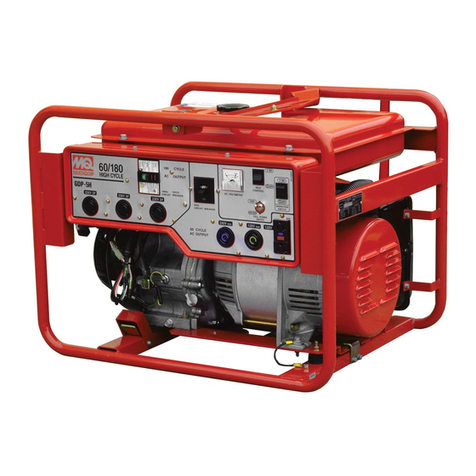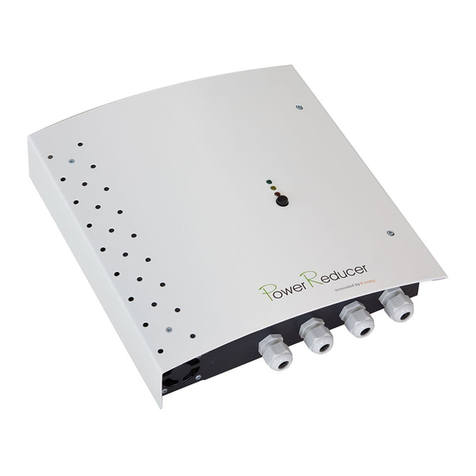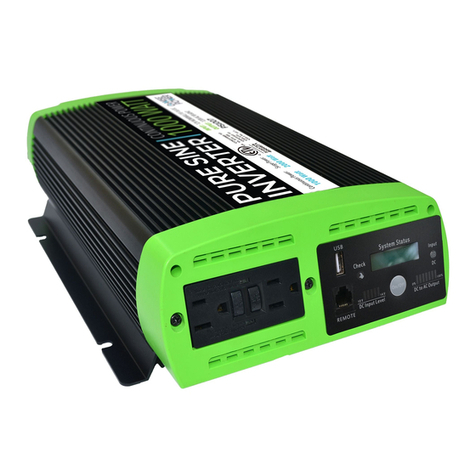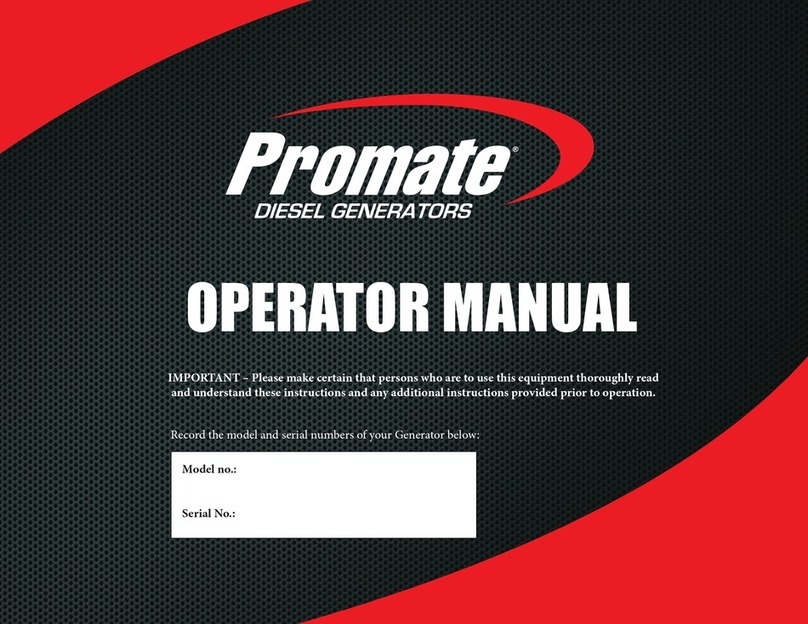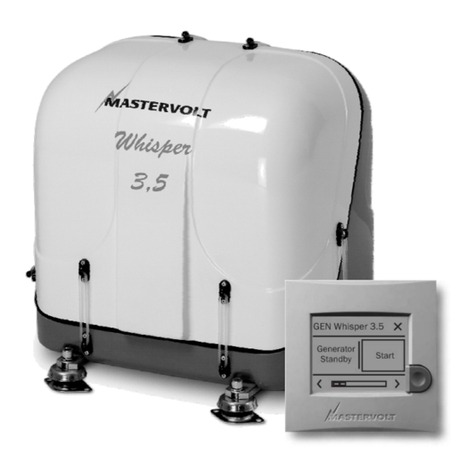
Additional Instructions
Also note the following points to prevent an accidental failure, injury, electric shock, etc.
Transportation and Installation
Wiring
Test operation and adjustment
Operation
앫Transport the product using the correct method that corresponds to the weight. Failure to observe this could lead to injuries.
앫Do not stack the inverter boxes higher than the number recommended.
앫
Ensure that installation position and material can withstand the weight of the inverter. Install according to the information in the instruction
manual.
앫Do not install or operate the inverter if it is damaged or has parts missing. This can result in breakdowns.
앫When carrying the inverter, do not hold it by the front cover or setting dial; it may fall off or fail.
앫Do not stand or rest heavy objects on the product.
앫Check the inverter mounting orientation is correct.
앫Prevent other conductive bodies such as screws and metal fragments or other flammable substance such as oil from entering the
inverter.
앫As the inverter is a precision instrument, do not drop or subject it to impact.
앫Use the inverter under the following environmental conditions. Otherwise, the inverter may be damaged.
햲Temperature applicable for a short time, e.g. in transit.
앫If halogen-based materials (fluorine, chlorine, bromine, iodine, etc.) infiltrate into a Mitsubishi Electric product, the product will be
damaged. Halogen-based materials are often included in fumigant, which is used to sterilize or disinfect wooden packages. When
packaging, prevent residual fumigant components from being infiltrated into Mitsubishi Electric products, or use an alternative
sterilization or disinfection method (heat disinfection, etc.) for packaging. Sterilization of disinfection of wooden package should also
be performed before packaging the product.
앫To prevent a failure, do not use the inverter with a part or material containing halogen flame retardant including bromine.
앫Do not install assemblies or components (e. g. power factor correction capacitors) on the inverter output side, which are not approved
from Mitsubishi Electric. These devices on the inverter output side may be overheated or burn out.
앫The direction of rotation of the motor corresponds to the direction of rotation commands (STF/STR) only if the phase sequence (U, V,
W) is maintained.
앫Before starting operation, confirm and adjust the parameters. A failure to do so may cause some machines to make unexpected
motions.
앫When you have chosen the retry function, stay away from the equipment as it will restart suddenly after an alarm stop.
앫The key is valid only when the appropriate function setting has been made. Prepare an emergency stop switch separately to
make an emergency stop (power off, mechanical brake operation for emergency stop, etc).
앫Make sure that the start signal is off before resetting the inverter alarm.A failure to do so may restart the motor suddenly.
앫The load used should be a three-phase induction motor only. Connection of any other electrical equipment to the inverter output may
damage the inverter as well as the equipment.
앫Performing pre-excitation (LX signal and X13 signal) under torque control (real sensorless vector control) may start the motor running
at a low speed even when the start command (STF or STR) is not input. The motor may run also at a low speed when the speed limit
value = 0 with a start command input. Perform pre-excitation after making sure that there will be no problem in safety if the motor runs.
앫Do not modify the equipment.
앫Do not perform parts removal which is not instructed in this manual. Doing so may lead to fault or damage of the inverter.
앫The electronic thermal relay function does not guarantee protection of the motor from overheating. It is recommended to install both an
external thermal and PTC thermistor for overheat protection.
앫Do not use a magnetic contactor on the inverter input for frequent starting/stopping of the inverter. Otherwise, the life of the inverter
decreases.
앫Use a noise filter to reduce the effect of electromagnetic interference and follow the accepted EMC procedures for proper installation
of frequency inverters. Otherwise nearby electronic equipment may be affected.
앫Take appropriate measures regarding harmonics. Otherwise this can endanger compensation systems or overload generators.
앫When parameter clear or all clear is performed, set again the required parameters before starting operations. Each parameter returns
to the initial value.
앫The inverter can be easily set for high-speed operation. Before changing its setting, fully examine the performances of the motor and
machine.
앫The DC braking function of the frequency inverter is not designed to continuously hold a load. Use an electro-mechanical holding
brake on the motor for this purpose.
앫Before running an inverter which had been stored for a long period, always perform inspection and test operation.
앫For prevention of damage due to static electricity, touch nearby metal before touching this product to eliminate static electricity from
your body.
CAUTION
Environment
Surrounding
air
temperature
Pr.570 = “2”
(Initial value) 10°C to +50°C (non-freezing)
Pr.570 = “102”
10°C to +40°C (non-freezing)
Ambient humidity 90% RH or less (non-condensing)
Storage temperature 20°C to +65°C 햲
Atmosphere Indoors (free from corrosive gas, flammable gas, oil mist, dust and dirt)
Altitude Maximum 1000m above sea level for standard operation. After that derate by 3% for every extra
500m up to 2500m (91%).
Vibration 2.9m/s² or less at 10 to 55Hz (directions of X, Y, Z axes)
CAUTION
CAUTION
WARNING
CAUTION







